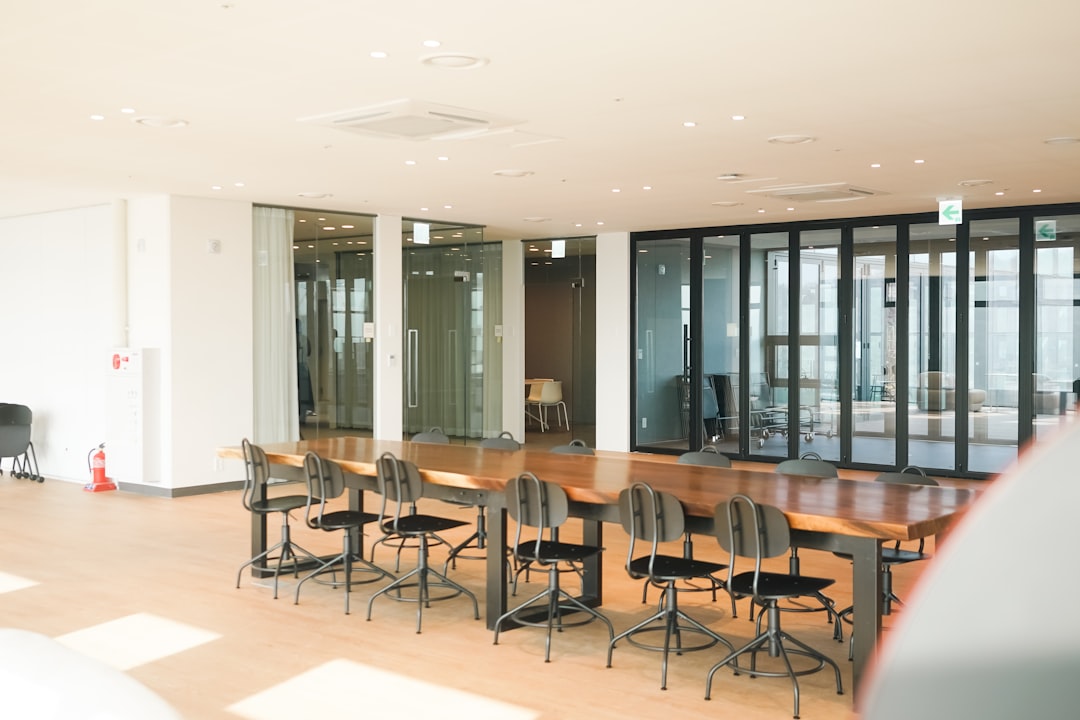

Engage prospects with a scan and streamline customer engagement with FREE QR code marketing tools by Sona – no strings attached!
Create a Free QR CodeFree consultation

No commitment

Engage prospects with a scan and streamline customer engagement with FREE QR code marketing tools by Sona – no strings attached!
Create a Free QR CodeFree consultation

No commitment
In today’s digitally driven world, QR codes have evolved from novelty to strategic powerhouse, especially for interior contracting companies. The discipline relies on showrooms, jobsite signage, brochures, and proposals that influence decisions in the physical world; QR codes serve as instant bridges to digital actions like scheduling site visits, exploring portfolios, and submitting RFQs without any app download. They reduce friction for prospects who are interested, but not ready to speak on the spot.
Whether your focus is commercial interiors, residential remodeling, or construction project management, QR codes can convert fleeting offline touchpoints into measurable digital engagement. By transforming analog materials into interactive entry points, you accelerate response times, capture more qualified leads, and guide prospects through a connected buyer journey supported by data, automation, and targeted follow-up.
This article shows how to deploy QR codes across the entire client lifecycle. You will find practical placements, campaign structures, analytics best practices, and examples that help interior contracting firms turn anonymous attention into pipeline, speed up deal cycles, and deliver a cohesive client experience from first scan to signed contract and beyond.

Interior contracting businesses often lose momentum between initial interest and action because of slow, manual processes. A potential client might admire a project board, take a brochure, or notice a vehicle wrap in a parking lot, then forget to follow up later. QR codes shorten the distance between interest and conversion. With a simple scan, that prospect lands on a relevant destination: a quote request, a live calendar to book a walkthrough, or an interactive portfolio filtered by sector and budget.
This step-by-step approach focuses on replacing outdated analog processes, creating clear calls to action, and capturing data that fuels better follow-up. When your print collateral, site signage, and proposal packets all include QR codes tied to specific outcomes, you create repeatable micro-conversions that stack into measurable revenue gains. The result is an always-on conversion engine that works wherever your brand shows up in the physical world.
A modern platform like Sona QR streamlines each of these steps. You can create dynamic codes, centralize analytics, update destinations without reprinting, and sync scan activity with your CRM so marketing and sales pursue the same revenue targets with shared data.

Interior contracting teams juggle a complex mix of offline assets: van wraps, jobsite hoardings, showroom displays, floor plan boards, sample kits, business cards, and proposal packets. These materials attract attention, but historically you could not track who engaged or what message resonated. QR codes turn static assets into gateways for action, letting prospects book, browse, or request with a single scan, and letting your team see what is working.
Speed is critical in this industry. Prospects often evaluate multiple contractors in a short decision window and the team that makes it easiest to schedule, verify credentials, or view relevant work earns the first conversation. QR codes compress the time between curiosity and commitment. They allow you to update content on the fly without reprinting, and they generate data that links physical touchpoints to pipeline and revenue.
As a simple example, a QR code on project signage at a high-traffic commercial site can invite property managers, tenants, or neighboring businesses to explore similar build-outs and book a walkthrough. That code transforms passive foot traffic into a measurable channel that fills your calendar.

Different moments call for different QR formats. A vCard on a project manager’s card helps networking contacts save details instantly. A web link on a brochure drives prospects to a filtered gallery that builds confidence. An SMS or email trigger can pre-load a request so a prospect only taps send. Selecting the right format ensures your scanner’s intent is met with the simplest possible action.
Dynamic QR codes are particularly powerful in contracting where physical assets have long lifespans. You can update destinations as campaigns evolve, tailor content to seasons or sectors, and preserve print investments while keeping messaging current. Static codes still have a role for permanent resources like warranty portals or safety manuals that rarely change.
In interior contracting, web links to tailored forms and galleries, plus vCards for direct contact, are the workhorses. SMS or email triggers are excellent for jobsite signage in noisy environments where a quick pre-filled request beats a phone call.

Growth depends on showing up where interest manifests and giving that interest a fast path to action. In interior contracting, many of those moments happen in the field: on hoardings, in showrooms, during property tours, and inside proposal reviews. QR codes fit naturally into these materials and convert browsing into pipeline.
Think of every physical touchpoint as a potential onramp. By placing codes strategically and using unique codes for each asset or location, you can evaluate which channels pull their weight. That insight informs print budget, staffing at events, and early investments in sectors or service lines where demand is strongest.
Every one of these placements can become a measurable source of leads when supported by dynamic QR codes and connected analytics.

Interior contractors sell outcomes that prospects want to see and feel: functionality, durability, and aesthetics under real constraints. QR codes help you prove capabilities and move buyers forward with less friction. The most effective use cases combine a clear CTA with a destination that answers the next question a buyer would ask.
These three examples illustrate how QR codes make common interactions faster, more transparent, and easier to track. Each use case can be tailored to segment by audience, project type, or region, and each can be powered by dynamic codes to keep content fresh.
As you expand, add specialized codes for subcontractor pre-qualification, spec downloads for architects and designers, safety documentation for visitors, and warranty or maintenance portals for facilities teams. Each of these improves experience while creating data that supports smarter resourcing and marketing.
Every scan is a micro-signal: what someone is looking at, where they are, and how ready they might be to act. By deploying unique QR codes across touchpoints and syncing scans to your CRM, you can build segmented audiences for tailored follow-up. This is particularly valuable in contracting, where buyer journeys differ between commercial property managers, architects, and residential homeowners.
The goal is to avoid generic nurture and instead speak to the exact scenario implied by the scan. If someone scans a code on a commercial jobsite sign and views your healthcare portfolio, their follow-up should look different from a homeowner scanning a kitchen remodel flyer. Intelligent segmentation ensures your ads, emails, and sales outreach arrive with context.
With Sona QR, each code acts as a smart entry point that captures context and routes contacts into the right segment automatically. That precision increases response rates and keeps sales focused on the most promising opportunities.
QR codes do their best work when they connect offline discovery with digital journeys you already manage. Your brochures, proposals, site boards, and vehicles create awareness; your website, CRM, and marketing automation convert attention into pipeline. QR codes sit at the center, unifying attribution and enabling immediate action.
A connected funnel for interior contracting might look like this: a commercial property manager scans a code on a project board, views a sector-specific case study, books a walkthrough in two taps, receives an automated confirmation and pre-qualification form, then gets retargeted with a testimonial video before the meeting. Each step is measured, and all activity is captured in your CRM.
By managing all codes in a centralized platform like Sona QR, you can monitor performance across channels, update destinations on the fly, and connect scan data to sales outcomes.
A disciplined workflow makes QR campaigns repeatable and scalable. Use this checklist to move from idea to deployment with strong attribution and conversion fundamentals. Align each step with clear business outcomes so you can prove impact and optimize quickly.
Below are the five core steps. Each includes guidance tailored to interior contracting scenarios, from showroom interactions to jobsite signage and trade show outreach.
Sona QR supports this workflow with dynamic code management, real-time analytics, and CRM integrations that make it easy to iterate without operational overhead.
Historically, the leap from a brochure or jobsite sign to a booked meeting was a black box. QR analytics change that by connecting physical engagement to digital behavior and revenue outcomes through offline attribution. You can see which placements drive scans, which scans convert to inquiries, and which inquiries lead to closed business. This clarity helps you shift budget to proven channels and refine messaging to match buyer intent.
Analytics also improve internal collaboration. Marketing can demonstrate the performance of print and out-of-home assets, while sales can prioritize follow-ups based on recency and frequency of scans. Operations can flag surges in demand by location or service category to plan capacity. The net effect is a more predictable pipeline supported by unified data.
With Sona QR and Sona identity resolution, you can go further by unifying scans with broader buyer journeys and attributing revenue to QR engagement. Identity resolution links repeat interactions to known contacts, and multi-touch attribution clarifies the role each QR code plays within the larger sequence of touches that lead to a signed contract.
Once your first campaigns are live, small improvements compound quickly. Focus on attribution clarity, instant action paths, and staff enablement. Your goal is to make scanning feel natural at every high-intent moment and to ensure your team responds with speed and relevance.
Think creatively about placement and packaging. Interior contracting offers a wealth of surfaces and moments where a helpful QR creates value. Samples, project mock-ups, and post-install materials become more useful when they connect to deeper content or next steps in a single scan.
These practices create a virtuous cycle. Your assets become more interactive, your data more precise, and your team more responsive. That stack of advantages speeds up decisions and grows revenue without proportional increases in spend.
For interior contracting companies determined to gain a competitive edge in a transformation-driven world, QR code strategies are now essential. By integrating versatile, trackable QR workflows, you combat missed prospects, improve lead quality, and eliminate blind spots that once caused slow or inconsistent growth. Whether modernizing your inbound lead flow, building richer prospect profiles, or precisely measuring conversion touchpoints, a strategic QR deployment will prepare your company for scalable, long-term success across both commercial and residential projects.
Start with a few high-impact placements like proposal packets and project signage, connect your codes to intent-matched destinations, and measure everything. Platforms like Sona QR make it easy to generate dynamic codes, personalize experiences, and integrate analytics with your CRM. Start creating QR codes for free.
QR codes have transformed interior contracting companies from traditional project showcases into dynamic, measurable growth engines. Whether it’s accelerating client acquisition, enhancing on-site customer engagement, or streamlining project updates, QR codes replace outdated communication methods with instant, mobile-friendly actions that capture real-time data to optimize every interaction. Imagine clients scanning a code to instantly view detailed project portfolios or schedule consultations—turning curiosity into confident conversions.
With Sona QR, interior contracting companies can create dynamic, trackable QR codes in seconds, update content instantly without reprinting materials, and directly link scans to business outcomes. No more missed leads or static brochures—just smarter, more effective campaigns that drive measurable results. Start for free with Sona QR today and transform every scan into a new opportunity, a satisfied client, or a closed contract.
Consider the company's ability to provide clear calls to action, modernize analog processes, offer measurable outcomes, and demonstrate a cohesive client experience supported by data and automation.
Look for companies that utilize dynamic tools like QR codes to track engagement, provide transparent portfolios, enable easy scheduling, and gather client feedback and reviews to build reputation.
They offer commercial interiors, residential remodeling, construction project management, project portfolio showcases, site visits, quote requests, and client feedback collection services.
The article does not provide specific cost information for hiring interior contracting companies.
Successful projects include commercial build-outs showcased via portfolios accessible through QR codes on brochures, project signage, and vehicle wraps that demonstrate functionality, durability, and aesthetics.
They place QR codes on physical assets like brochures, signage, and vehicle wraps to enable instant actions such as booking site visits, requesting quotes, viewing portfolios, and submitting feedback without app downloads.
Common QR code formats include web links to tailored landing pages, vCards for contact sharing, SMS or email triggers for pre-filled requests, Wi-Fi access codes, and app download links.
Effective placements include trade shows, direct mail, jobsite signage, proposal packets, showroom displays, sample boards, and vehicle wraps to capture interest at various buyer journey stages.
They use dynamic QR codes with analytics to track scan rates by asset and location, attribute conversions to specific codes, monitor downstream actions like bookings, and sync data with CRMs for unified reporting.
By deploying unique QR codes tied to specific touchpoints and syncing scan data to CRMs, companies build segmented audiences based on role, project type, location, and funnel stage for personalized follow-up and advertising.
Use Sona QR's trackable codes to improve customer acquisition and engagement today.
Create Your FREE Trackable QR Code in SecondsJoin results-focused teams combining Sona Platform automation with advanced Google Ads strategies to scale lead generation

Connect your existing CRM

Free Account Enrichment

No setup fees
No commitment required

Free consultation

Get a custom Google Ads roadmap for your business






Launch campaigns that generate qualified leads in 30 days or less.
